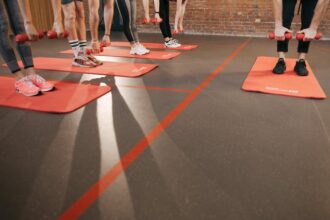A new study published in the journal Obesity, the flagship publication of The Obesity Society (TOS), reveals that both regular and occasional physical activity can contribute to weight loss. This study, pioneering in examining physical activity patterns and their impact on fat tissue mass, challenges conventional guidelines that prescribe specific weekly exercise frequencies. According to World Health Organization (WHO) recommendations, adults should ideally engage in at least 150 minutes of moderate physical activity per week, 75 minutes of vigorous activity, or a combination of both. However, meeting these guidelines can be daunting in today’s fast-paced society, where time constraints often hinder consistent exercise routines.
The research, conducted by healthcare scientist Lihua Zhang from Fuwai Hospital, National Center for Cardiovascular Diseases, Chinese Academy of Medical Sciences and Peking Union Medical College, Beijing, China, focuses on the concept of “weekend warriors” — individuals who concentrate their exercise into one or two sessions per week. This approach was equally effective in promoting weight loss compared to more frequent exercise routines, provided that the recommended activity goals were achieved.
Zhang emphasises the relevance of this finding for individuals who struggle to integrate regular exercise into their daily lives due to sedentary occupations, such as office workers and bus drivers. “Our study offers an alternative option for them to stay fit,” Zhang explains, suggesting outdoor activities like climbing, hiking, cycling, or running as suitable options for weekend warriors.
The study analysed data from over 9,600 participants aged 20 to 59, drawn from the National Health and Nutrition Examination Survey from 2011 to 2018. Using dual-energy X-ray absorptiometry (DXA) and anthropometric measures, researchers assessed abdominal and overall adiposity. Physical activity levels were categorised as inactive, weekend warrior, or regularly active based on the Global Physical Activity Questionnaire. Linear regression models explored associations between physical activity patterns and adiposity indicators.
Results indicated that participants adopting the weekend warrior approach, alongside those who were regularly active, exhibited lower levels of abdominal adiposity, waist circumference, whole-body fat mass, and body mass index than inactive individuals. Furthermore, both the weekend warrior and regularly active groups tended to be younger, more educated, and less likely to have hypertension or diabetes compared to their inactive counterparts.
Dr. Beverly Tchang, Assistant Professor of Clinical Medicine at the Comprehensive Weight Control Center, Weill Cornell Medicine, New York, who was not involved in the study, underscores the broader implications of these findings. “This study reinforces the fundamental principle that any level of physical activity is beneficial for health,” Dr. Tchang explains. She highlights that the intensity and duration of the weekend warriors’ workouts correlated with even more significant reductions in abdominal fat. Still, the key takeaway is choosing physical activities that fit individual lifestyles.
This study challenges traditional notions about the frequency of exercise required for weight loss, suggesting that regular engagement and condensed, intense activity sessions can yield significant health benefits. It provides valuable insights for public health recommendations, particularly for individuals with limited time for exercise due to work or other commitments, offering them a feasible pathway to improve fitness and reduce adiposity through effective physical activity strategies.
More information: Lubi Lei et al, The associations of “weekend warrior” and regularly active physical activity with abdominal and general adiposity in US adults, Obesity. DOI: 10.1002/oby.23986
Journal information: Obesity Provided by The Obesity Society








